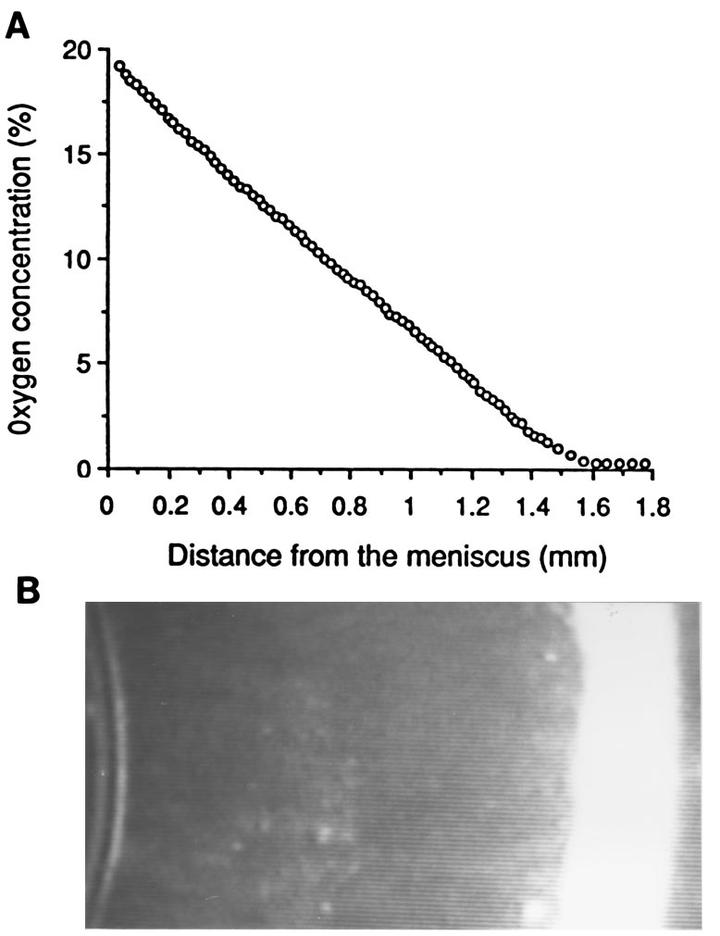Oxygen taxis and proton motive force in Azospirillum brasilense

Abstract
The microaerophilic nitrogen-fixing bacterium Azospirillum brasilense formed a sharply defined band in a spatial gradient of oxygen. As a result of aerotaxis, the bacteria were attracted to a specific low concentration of oxygen (3 to 5 microM). Bacteria swimming away from the aerotactic band were repelled by the higher or lower concentration of oxygen that they encountered and returned to the band. This behavior was confirmed by using temporal gradients of oxygen. The cellular energy level in A. brasilense, monitored by measuring the proton motive force, was maximal at 3 to 5 microM oxygen. The proton motive force was lower at oxygen concentrations that were higher or lower than the preferred oxygen concentration. Bacteria swimming toward the aerotactic band would experience an increase in the proton motive force, and bacteria swimming away from the band would experience a decrease in the proton motive force. It is proposed that the change in the proton motive force is the signal that regulates positive and negative aerotaxis. The preferred oxygen concentration for aerotaxis was similar to the preferred oxygen concentration for nitrogen fixation. Aerotaxis is an important adaptive behavioral response that can guide these free-living diazotrophs to the optimal niche for nitrogen fixation in the rhizosphere.